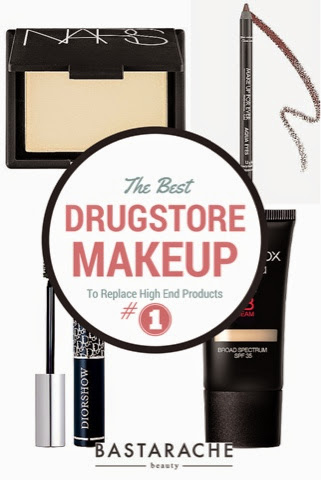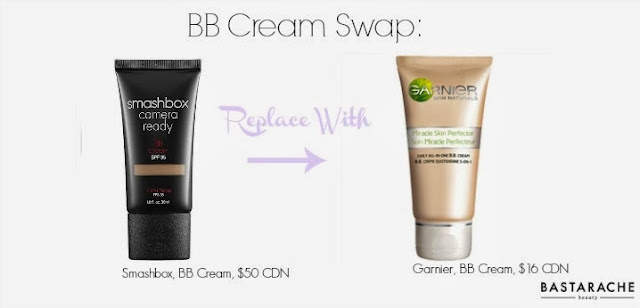Sometimes I like to dream about an ideal world, and in particular lately, the ideal world for a makeup artist.
I work with a lot of seasoned pros who know what a makeup artist needs to be his or her most successful, but I still have some photographers who are just starting to work with and appreciate the quality professional hair and makeup can bring to a shoot (I call them my late bloomers.) Regardless, working conditions can't always be ideal, I understand that, and it's part of my training and experience to compensate for that and produce beautiful makeup regardless of if makeup is being done in the back of a car, or in a dimly light room. However, if you are able to set your makeup artist up to be her most successful, I strongly encourage you to do so!
Here are a few tips to help your artist produce the best possible results. Some of these may sound like no brainers - but, you would be surprised at some of the situations me or fellow work colleagues have walked into. I should put a disclaimer: These are my personal preference, other artists may agree or disagree or have something else to add - and I strongly encourage you to do so by commenting at the bottom :)
I also hope you see my heart in this and don't think I'm being critical, I don't think that I have that tone, but just in case I'll just say I hope you all get my sense of humor and get some great information to make your images that much better.
#1. A Schedule
Create and communicate your tentative timeline for your shoot. Possible Inclusions; Call time, makeup & hair start &end time, shoot starting time, 2nd look time, any additional looks, expected wrap up time or when team is good to go home.
Although so many things can come up with shoots that can throw things off schedule, it's ideal to have a vague outline of timing for your shoot and communicate it to your hair, makeup and wardrobe team. I am sure most photographers have a tentative idea in their minds of when they would like to start hair, then makeup, then shoot, then change looks, etc. But often besides a call time, not much more information is given.
One of the reasons why this is so important, especially for photographers starting off, is once you start shooting bigger or commercial clients sometimes your wardrobe team is being paid an hourly rate, the longer things drag on,the more your client is going to have to pay, which they obviously won't be happy about. I also find if I have a "deadline" to aim for it keeps me on my toes and I work faster.
It's also good to have an idea when your team will be done and able to go home, if you want them to stay for touch ups, or look changes or anything, having that all clearly communicated before hand is great for all the other parties involved. Most creatives love what they do and have no problem staying on set to make sure everything is perfect until the end, it's just good to know what expectations are and when you want to wrap everything up.
Part of knowing how long to give for hair and makeup is having a plan for the looks prior to the shoot...
#2. Ideas & Inspirations Communicated before the Shoot
Tell your MUA your vision on inspiration for the shoot, including any (no matter how little of how much) direction you can give them for makeup. The better prepared your MUA is the better results she will produce.
Whenever I have a bride hire me, I also do a consultation prior to ensure we are on the same page for vision of her wedding day makeup for her big day. Although a consultation is certainly not required for a shoot, it is important to communicate your vision with your makeup artist before your big day. This allows your makeup artist to design a makeup look,or do a face chart or possibly test it out to see if there is going to be any issues with what you are looking for, and come prepared with a plan in mind for how to do the look and what products to use. This also shaves so much time off of the shoot because your artist won't have to hum and ha about what to use, or how to use it because they SHOULD have figured that all out before they were on your dollar if you gave them the info.
I find most times, clients don't know proper makeup terminology- and why would they, but by even saying things like we want a natural look, or we want dramatic, we want dewy skin, or we want the focus on the eyes etc. this gives your artist something to work with. He or she can start pulling together ideas and condense them into a Pinterest board or some visual reference to share with you, which you can then counter and say yes this is exactly what I am looking for, no wrong direction, or I like these but not these ones, and why - if you know.
I also have an inspiration binder I will bring with me sometimes when a client says they want a "smokey eye" I will bring a binder with different smokey eye looks and ask which one tends to fit their vision best. This method is often used when a photographer hires me for a boudoir, glamor or beauty portrait, as the shoot is the first time I meet the client and their opinion on the makeup and hair is important too, so the creative direction can be outline by the photographer prior to the shoot, but the client paying for the portrait has the last say on how they want to look. This takes a little extra time on both parties side, but is so helpful in guaranteeing great results.
#3. Tech Specs
Lighting? We need to know! The type of lighting you use and how you light the model has specific makeup application requirements to produce the best results.
One of the many, many reasons why it's better to hire a professional makeup artist over a makeup enthusiast or friend is because a makeup artist will know how the makeup will translate in different lighting. For example if you are front lighting, the face should be pretty evenly lit up all over, however if you are using harsh lighting, the makeup should be a stronger then soft lighting or a soft box would need. Or if you're lighting from one side, this can cause shadows on the face and have one side of the face look like it has heavy makeup, while the other has barely anything. Letting your makeup artist know this, she can compensate for it and it's important to show her on a monitor so that everything looks balanced once you start shooting. The makeup application style will change again for outdoor shooting, or back lighting. So more info the better for how you will be shooting and what the images will be used for afterwards.
#4. Model
Knowing what the models features are is key to successfully desiging a look in advance that will both capture the photographer/creative directors vision, and enhance -not compete- with the models natural beauty.
For commercial or fashion work, it is great to send the makeup artist a head shot of the model(s) without makeup with info about the shoot. This also helps the makeup artist be more prepared for arrival if she knows the eye color of the model, what her complexion is like etc.
Once I have worked with a model or even a photographer, a number of times, I have files on my computer to keep notes about their styles or unique needs. If I have a model with dry skin, I will make a note of that as a reminder for when I will need to work with them again I will be prepared, if they have little to no lashes, I will note that, to make sure I have false eyelashes to bring.
And I even have some notes on photographers I work with, things I know they like, or styles they have, obviously things can change and they can want to take something in a different direction then they usually do, but if I know a photographer tends to want me to really contour the models face, I will make a note of that and ask them at the shoot if they are looking for strong contouring. One of the great reasons for building relationships with your hair, makeup and wardrobe team and using the same people frequently is they start to know your style and recognize your work and pay attention to what you like. Which means less work for you -you can focusing on the photography and not having to communicate the details over and over again to a new team.
So this is getting quite longer, and I have about 10 ideas to share, so I am going to break it up into a couple of posts. I hope this was not boring for you but that it gave you some great ideas on how to take your makeup artists, hair stylist and wardrobe stylist to the next level!
Please comment below, especially photographers or makeup artist who may disagree, agree, having something to add or questions to ask.
Stay tuned for part 2 !
xx
sj
www.bastarachebeauty.com























